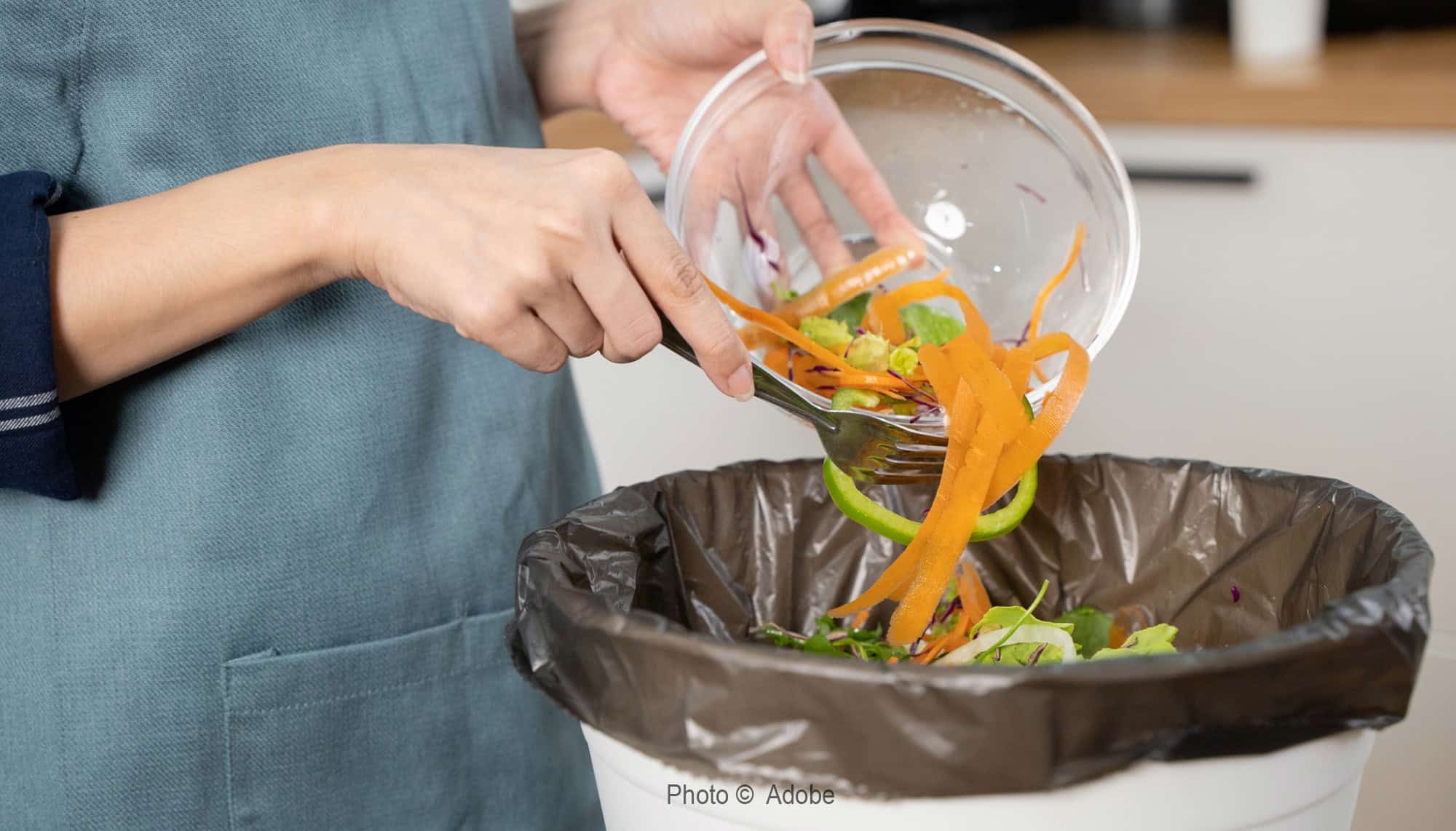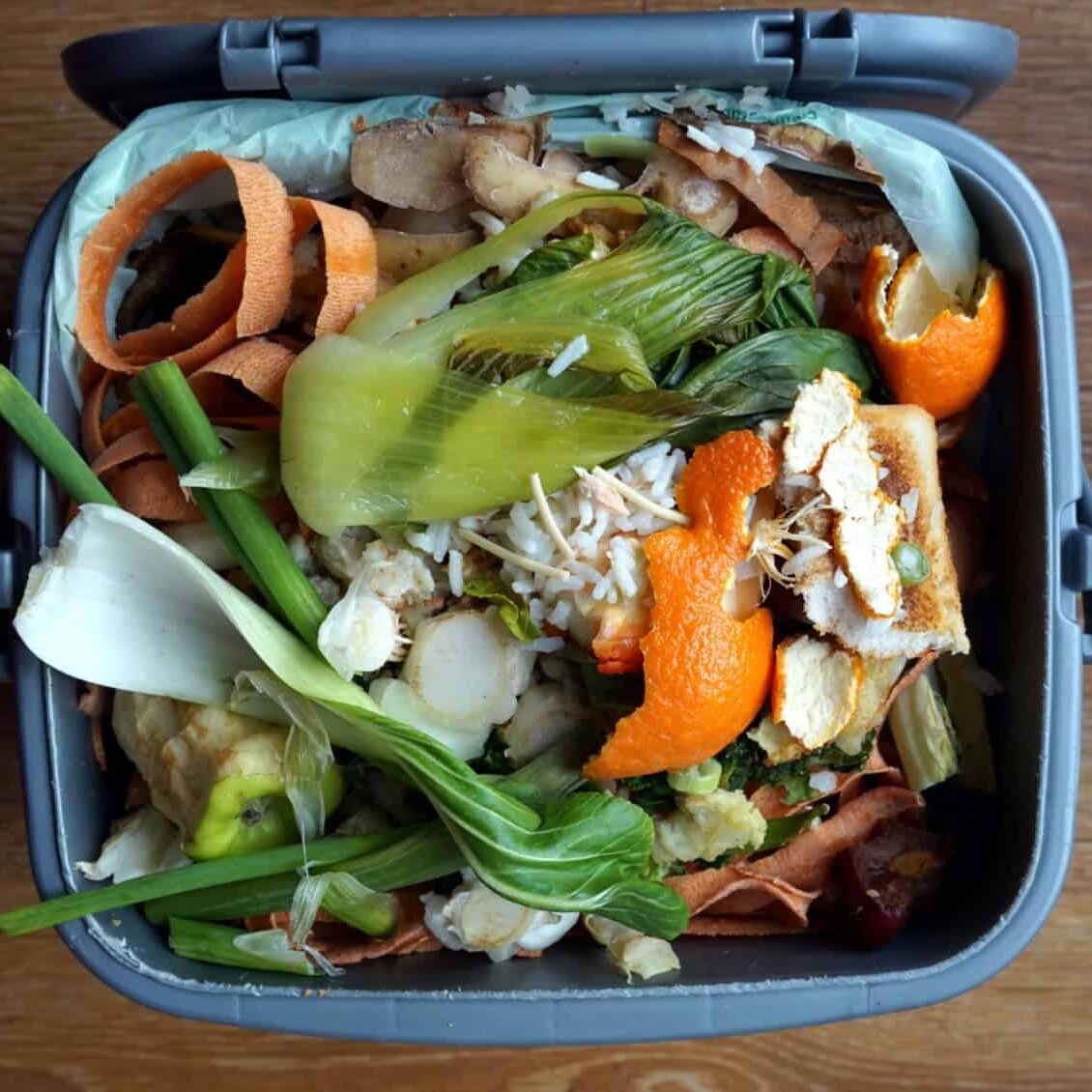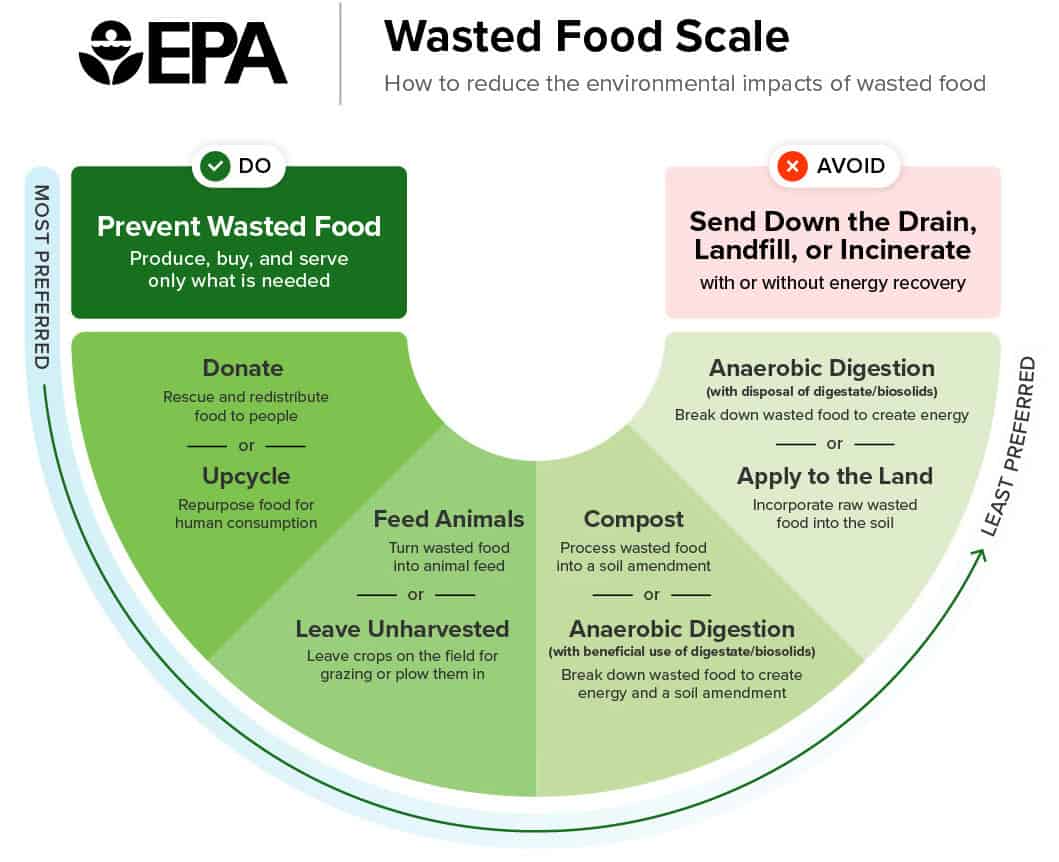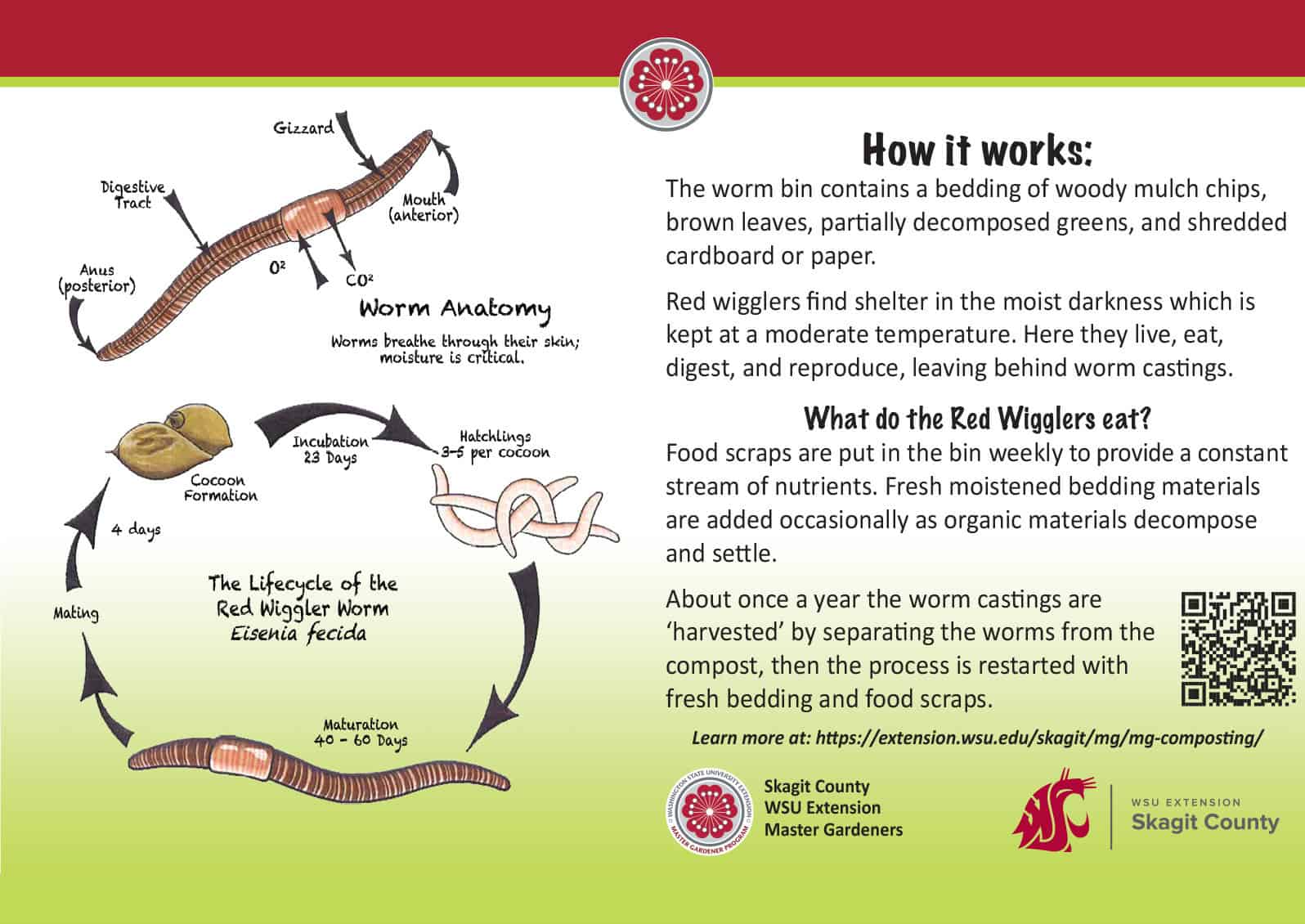

Small Changes Can Make a Big Impact in Reducing Food Waste
Master Gardener Katryna Barber and WSU Extension's Diane Smith discuss food waste and how we can help the planet by managing it better.
By Katryna Barber, Skagit County WSU Extension Master Gardener and Diane Smith, WSU Extension faculty member
The Rising Cost of Food Waste
Food prices are changing, impacting how we plan and use food. This isn’t a brand-new phenomenon. Food costs are constantly fluctuating. Cooks must adapt and find a way to feed people with what they have. Sometimes, it leads to some very tasty creations. Food prices these days are just one aspect of a larger situation that is getting more attention: Food Waste and what to do about it.
The average US family of four discards approximately $1,600 worth of produce annually. This waste isn’t limited to lost money paid for food at the grocery store. It also includes the wasted resources used to produce and distribute the food and the negative environmental impact that occurs when food is thrown away.
In our country, 1 in 6 people is food-security challenged, a fancy term for not having enough food. Happily, there is something we can do about it: eat more of the food we buy and not wasting it.
Cooking with scraps isn’t a new idea, but it has been refreshed and replated. What we can create with food “scraps” is incredible. This is a movement towards eating as much as possible of what we buy so it doesn’t get thrown away. For example, do you eat the leaves of radishes or carrots? They are edible. Do you use the liquid left in the can of garbanzo beans? How about corn cobs?

Learn new ways of reducing food waste
at these FREE events
Celebrate at MoNA
Sculpting Sustainability:
Solutions for Skagit Food Waste
Saturday, April 12 ~ 1 pm
at the Museum of Northwest Art in La Connor
This event is free, but registration is required at:
Register here
Know & Grow:
Preventing Food Waste
Tuesday, April 15 ~ 1 pm
at NWREC Sakuma Auditorium, 16650 SR 536, Mount Vernon
Free, no registration required.
From Waste to Wisdom
As a professor of Food & Consumer Sciences, Diane Smith has spent more than 30 years exploring and teaching about food and nutrition. She is passionate about helping people use food more mindfully.
Smith’s focus on food waste prevention began a couple of years ago when she took a sabbatical to study the connection between climate and diet. She traveled to Denmark, Italy, and NYC to explore food waste prevention activities that are happening elsewhere. The answer became clear when studying how our food choices affect the climate and what we can do to reduce that impact: keep food out of our landfills. We can do that by using the food we buy and not letting it go to waste. The expense is the most obvious reason people should care about their food waste.
When we waste food, we waste everything that goes into producing it. This includes the hidden costs, as well as our money. Ask a child where milk comes from, and many will say, “The grocery store.” They don’t realize how many resources are used to grow and get the food to our kitchens or restaurants: water, manual labor (planting, tending, harvesting), transportation, mechanical labor, fertilizers, pesticides, herbicides, electricity, packaging, and storage. When food is wasted, so is all the energy, time, and resources it takes to produce it. Those resources could have been saved. Our hard-earned money could have been saved.
In the end, we pay to throw our trash away. But there is no “away.” Our landfills are filling up and creating greenhouse gases that are contributing to climate change. Organic material sent to a landfill is buried and decomposes without air, a process called anaerobic digestion. The bacteria living in this anaerobic environment exhale carbon dioxide and methane gas. Humans can deal with small amounts of these gases but not in larger quantities or for long periods of time. Human exposure to these gasses, often referred to as “greenhouse gases,” increases damage to the body's systems. The cardiovascular, respiratory, reproductive, central nervous, immune, and digestive systems can be affected. The good news is that we can reduce the health risks by changing our habits and behaviors.
Find uses for food scraps before composting
Surprisingly, composting is not the first and best option for dealing with food waste, such as banana peels and coffee grounds. The new EPA chart suggests feeding livestock or pets first, then composting, and then, as a last resort, send it to the landfill.

In this chart, you can see the hierarchy of the best ways to deal with food waste. The main goal is to keep food out of landfills. Some studies suggest that 8% of global greenhouse gas emissions come from landfills. The most significant contributor to this problem is food waste. Washington State Department of Ecology has been focusing on reducing food waste and is committed to lowering landfill-disposed organic material by 75% by 2030. Right now, Washingtonians place 1.2 million tons of food waste into landfills per year. This waste is food from restaurants, institutional food services, and households. About 35% of this food is edible. Of that edible food waste, 37% of it is generated by households; 60% is from the commercial sector.
Smith employed the notion of cooking with scraps when invited to discuss the topic of food waste; she wanted to make it more fun, hands-on, and practical. When talking about concepts of edible and nonedible food waste, she wanted to give options to her audience to have them reimagine how to use what Americans consider nonedible food parts. Just because a part of the food is culturally nonedible does not mean it is trash. While not a new concept, cooking with ends and stems has been reimagined for modern kitchens as a creative and sustainable approach to cooking. Different cultures, customs, and culinary uses of food parts make cooking adventurous and fun. It's about transforming what might typically be discarded into delicious, nutritious additions to your meals.
|
Innovative chefs and food writers around the country have created excellent guides to help you master the art of waste-free cooking. Check the internet for no-waste cooking, keeping food out of the garbage, a zero-waste diet, using peels, cores, rinds, and stems in meals, etc. The ideas are amazing! Cooking with Scraps: Turn Your Peels, Cores, Rinds, and Stems into Delicious Meals by Lindsay-Jean Hard is a comprehensive guide that transforms traditional food scraps into sophisticated cuisine. Waste Not: How to Get the Most from Your Food by the James Beard Foundation features recipes and tips from renowned chefs. Root to Stem: A Seasonal Guide to Natural Recipes and Remedies for Everyday Life by Alex Laird focuses on using whole ingredients for both culinary and medicinal purposes. The No-Waste Vegetable Cookbook: Recipes and Techniques for Whole Plant Cooking by Linda Ly specifically addresses how to use every part of your vegetables. IKEA's Scraps Book is a creative digital cookbook featuring recipes from prominent chefs focusing on recipes using ordinary kitchen scraps. Download here >
|
Discover how items we often discard—such as broccoli stems, citrus peels, and herb stems—can become the stars of our next meal. This can save money while reducing waste. From turning stale bread into creative croutons to transforming vegetable scraps into flavorful broths, the possibilities are endless. When we keep this awareness of what it takes for food to get to us in the front of our consciousness, we can more easily make mindful choices when buying our food and remember to use food well.
We need to be more mindful, or conscious, about using food well, creating little waste, and remembering that food is a finite resource. Being mindful means enjoying the food we prepare and serve, considering the miles the food has traveled. It means appreciating the personal effort spent nourishing ourselves, our family, and our friends. If we purchased a basket of strawberries, would we intentionally let it rot? Being mindful means using the food we buy to its highest purpose. Planning what to buy, storing the food for its longest shelf life, and using food to feed ourselves and family are ways of being mindful about and honoring our food.
We all have busy, full lives. How does one get started? Is it hard?
Smith suggests several approachable ways to reduce food waste:
Be Practical--Start Small
- Create meal plans: Consider the cycle of the food you buy for different opportunities to reduce food waste.
- Inventory existing supplies: Know what you have already and what needs to be consumed. Educate yourself about expiration and use-by dates and safe storage techniques.
- Shop with a list and eat before shopping (this helps avoid impulse buys).
- Buy the amount of food you need for the meals you plan to serve; this reduces leftovers.

Washingtonians place 1.2 million tons of food waste into landfills every year. About 35% of this food is edible. Of that edible food waste, 37% of it is generated by households. © Adobe Stock
Planned Leftovers
As you consider what to prepare for a meal, consider leftovers so you can plan to use all that you cook. Once a week, enjoy a Leftover Day (think Taco Tuesday followed by Waste-Free Wednesdays). Use visual reminders like the “Eat Me First” sign to gobble up those leftovers instead of tossing them.
Use Everything
Cook with vegetable scraps (like radish leaves and carrot tops). Save aquafaba (chickpea liquid) for baking, use corn cobs for stock, and repurpose celery ends and leaves. Freeze, can, or dry scraps for later. Feed livestock. Look for new creative ways to use leftovers and scraps.
Admittedly, a change in habits takes some effort. It has been very easy to throw food away in this country. Try considering why you prepare food the way you do. For example, take a rib of celery to put into soup. How much of either end of the rib do you cut off? Are those ends really inedible? Could they actually be used now or in another dish?
Check the websites in the references below for quick ideas on using dabs of leftovers, peelings, pits, and tidbits: freeze-drying, fruit leathers, baking, and soup stocks. We think you’ll be surprised and inspired.
Other benefits of using food more mindfully include gathering food before it gets composted and distributing it to people in need as gleaners and food banks do.
If you are entrepreneurial, consider how to use a waste product and squeeze the last drop from the garbage. Here are examples of what is already being done.
- A juice company uses unwanted watermelon rinds to make flavored water.
- A pickle company in Denver reuses water that was used to make pickles. The water’s second act is in a Bloody Mary mix.
- A Danish distillery offers apple farmers a bottle of cider in exchange for their unwanted apples.
- In 2022, the local gleaners' group diverted 1.4 million pounds of food from entering the landfill
Every household, even people living alone, can make a difference.
After completing her studies, Smith wondered how much of a difference one person or even one household could make. She did a food inventory and waste audit and was surprised at the amount being wasted. This type of inventory and audit can teach anyone where to start. Taking charge of how we cook and eat is one way to generate hope for the planet. Use the example of The Butterfly Effect: This proverb illustrates that seemingly inconsequential events can set off a chain of unpredictable consequences. Tossing out just one slice of bread into the landfill might not change anything. Still, if every household tosses bread into the landfill, it contributes to climate warming and indirectly results in climate change. The reverse is also true. Eat the slice of bread.


This past year, the staff at the Skagit Extension office decided to “walk the talk.” The Food Waste Prevention team advocated for office changes, including using leftovers discarded from lunches and food demos to feed the worms in the new worm bin. (Exceptions include onions, garlic, citrus, hot peppers, meat, dairy, etc.) The staff contacted the Skagit County WSU Extension Master Gardeners, and champions Herta Kurp, Claire Cotnoir, and Hank Davies to design and build a state-of-the-art worm bin. Fondly referred to as the Worm Chalet, it is just outside the Extension office front door. The composting area signage teaches about the foods that worms can eat, including which lunch scraps go in, and which scraps cannot be eaten. Since August, the office staff has fed the worms over 200 lbs. of scraps. The rich worm castings are created as the worms process the food and are used to enrich garden beds. The effort also included diverting paper towels to the green bin rather than the trash. Since the start, the office has filled and diverted 90 bags of paper towels to green waste recycling.
Efforts to reduce food waste are gaining momentum at state, national, and international levels. Check out these examples of government agencies working to reduce food waste and greenhouse gases:
- In Washington, the Department of Ecology supports a state-wide effort with the Use Food Well campaign and provides consumer resources to help reduce food waste.
- The United Nations Sustainable Development Goals (SDGs) provide a roadmap for addressing food waste on a global scale. Specifically, SDG 12.3 aims to halve per capita global food waste at the retail and consumer levels and reduce food losses along production and supply chains by 2030. This goal underscores the interconnectedness of food waste reduction with broader sustainability efforts, including poverty alleviation (SDG 1), zero hunger (SDG 2), and climate action (SDG 13).
- In the US, the EPA’s 2030 Food Loss and Waste Reduction Goal aims to cut food waste in half by 2030, while initiatives like the US Food Loss and Waste 2030 Champions program engage businesses in this mission (EPA, 2023).

Mark Your Calendar: Always the Saturday Before Mother's Day
We're growing 3,500 tomato plants, and over 3,000 flower and vegetable starts along with edible and ornamental perennials for you to bring home and plant your garden this season.
How can people become more involved in combating food waste?
This coming fall, WSU will be offering a Climate Steward Certificate program in Skagit and Island counties. The purpose of the six-week hybrid course starting in mid-September is to improve people’s literacy and understanding of climate change. The Climate Steward program explores how policy supports or hinders climate change. The goal is to create a cadre of climate stewards trained to be liaisons for the community. Keep an eye on the Extension website: https://extension.wsu.edu/skagit/ or call 360-428-4270 for more information.
Here locally, on Saturday, April 12, 2025 (1 p.m. – 2:30 p.m.), the Skagit Food Waste Prevention Coalition is hosting a day of learning “Sculpting Sustainability: Solutions for Skagit Food Waste” at the Museum of Northwest Art (MoNA).The fun, family-friendly event includes activities for kids and a panel discussion featuring local culinary experts giving an overview of the Skagit food landscape. They will provide ideas and outline solutions already in play! The cost is free, but an RSVP is required. Learn more at: https://www.monamuseum.org/events/foodwasteprevention
Join the movement to reduce food waste! Get started by doing your own food inventory and audit. Discover new recipes, learn how to cook with scraps, save money, help the environment, and positively impact our local community.
RESOURCES:
Websites discussing the connection between climate and diet:
climatechicago.fieldmuseum.org
nationalfoodmuseum.org
Skagit County WSU Extension: Food Waste Prevention Program. https://extension.wsu.edu/skagit/fam/
Washington State Department of Ecology: Use Food Well Program. https://ecology.wa.gov/waste-toxics/reducing-recycling-waste/organics-and-food-waste/sustainable-food-center/use-food-well-washington-plan
Resources for recipes and learning to cook with scraps:
James Beard Foundation (2018) Waste Not: How to Get the Most from Your Food. Rizzoli Press
Laird, A.(2019) Root to Stem: A Seasonal Guide to Natural Recipes and Remedies for Everyday Life. Penguin Life Press
Ly, L. (2020) The No-Waste Vegetable Cookbook: Recipes and Techniques for Whole Plant Cooking. Harvard Common Press
IKEA's Scraps Book. Free download at: https://www.ikea.com/ca/en/files/pdf/58/9f/589f2b5d/the-scrapsbook.pdf
Hard, L. (2018) Cooking with Scraps. Workman Publishing Company
Project Drawdown for information: www.drawdown.org
www.Niehs.nih.gov National Institute of Environmental Sciences, Health and Education
Naiyer, S. (2022) Effect of Greenhouse Gases on Human Health. Springer Nature Link. Retrieved from: https://link.springer.com/chapter/10.1007/978-981-16-4482-5_5
Eat this first sign download at: https://stopfoodwaste.org/resource/sign-for-inside-your-fridge
ABOUT THE AUTHORS:
Katryna Barber is a Skagit County WSU Extension Master Gardener, Class of 2019. She has completed the Skagit County Solid Waste Division Master Composter Recycler Training. Katryna currently helps maintain the compost area at the Discovery Garden on Memorial Highway West of Mount Vernon.
Diane Smith, RD, MA, is a Professor, Food & Consumer Sciences, Food Access & Health Promotion, WSU Extension Youth and Family, Skagit County. Her research and publications include food access/food security, direct-to-consumer marketing, and program implementation.
Questions about home gardening or becoming a master gardener may be directed to Skagit County WSU Extension Office, 11768 Westar Lane, Suite A, Burlington, WA 98233; by phone: 360-428-4270; or via the website: www.skagit.wsu.edu/mg
Washington State University Extension helps people develop leadership skills and use research-based knowledge to improve economic status and quality of life. Cooperating agencies: Washington State University, US Department of Agriculture, and Skagit County. Extension programs and policies are available to all without discrimination. To request disability accommodations contact us at least ten days in advance.

Thank you! Like the ideas. We do our best to keep food waste from the “green bin” and make rich compost for our garden.